Scumbling in art refers to a painting technique that involves applying a thin layer of paint with a dry brush and a loose hand over an existing layer. The idea is to allow parts of the already existing paint below to remain exposed.
In most cases, scumbling is used over dried paint, but you can also use it over wet paint. You just need to be careful with the colors blending together if you are scumbling over wet paint.
It is most commonly thought of as an oil painting technique, but it can also be used with acrylic or watercolor paints.
- When to Use Scumbling in Art?
- How to Use Scumbling?
- General Tips for Scumbling
- Examples of Scumbling
- Want to Learn More?
- Thanks for Reading!
When to Use Scumbling in Art?
Here are some of the common uses of scumbling:
- To add texture to the surface.
- To create a sense of atmosphere and depth (like in the painting by J.M.W. Turner below).
- To break up a background area to make it less monotonous.
- To build up highlights on top of a dark background.
- To make slight adjustments to color shapes.
- To soften the transition from one color to the next.
- To create a broken color effect that takes advantage of optical color mixing.

How to Use Scumbling?
To use the scumbling technique, you should pick up a small amount of paint straight from a tube with a dry brush and apply it loosely to the canvas. You do not want the paint to blend with the existing colors or to be so thick that the colors below are completely covered; you want the paint to scumble and break on top. You should also vary the strokes you use so that it does not look repetitive.
Tip: When scumbling color on top, use this as an opportunity to keep building up a sense of form and structure. Allow your brush to follow the contour of the subject.
General Tips for Scumbling
- In general, it is more effective to scumble light colors on top of darker colors.
- If you are using watercolors, then instead of scumbling white paint on top for your highlights, you should just leave areas of the paper exposed. The white paper is far more effective than white paint as your lightest light. But you could use scumbling to recover any white areas you accidentally cover up.
- You should avoid using any additional mediums or solvents when scumbling. In most cases, paint straight from the tube is the most suitable.
- Opaque color is often used for this technique, rather than transparent color.
Examples of Scumbling
When I think of scumbling, the first artist who comes to mind is Claude Monet. He used the technique in many of his paintings to build up a stunning vibration of color. In particular, his paintings of haystacks, water lilies and the Rouen Cathedral are great examples of this.
Below is a painting from his haystacks series. Monet painted this by scumbling numerous layers of color on top of each other. The end result is a vibrant display of oranges, yellows, reds, greens and purples. Monet also scumbled both light and dark colors (notice the dark reds and greens used for the haystacks and grass).
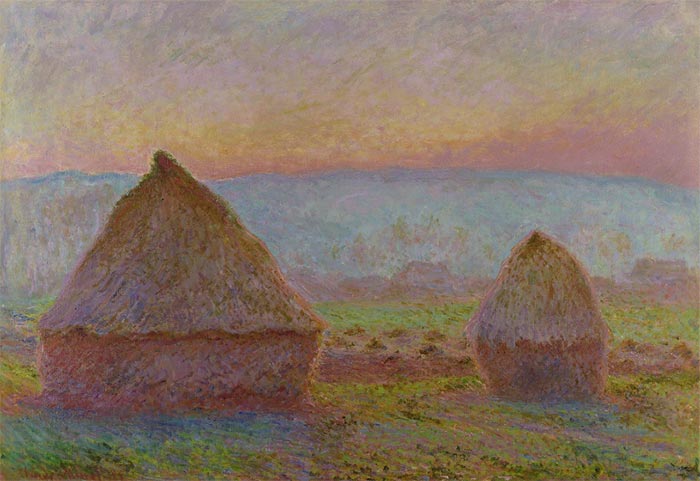
He is a close-up of Monet’s scumbling work.

Below is a much cooler painting by Monet from his water lilies series, which features a pleasant arrangement of greens, blues, yellows and purples. Monet used scumbling to build up the dynamic, broken colored surface.

In the close-up below, you can see all the distinct colors applied layer-on-layer. It seems he went back and forth scumbling with different greens, blues, purples and yellows until the canvas was filled with color.
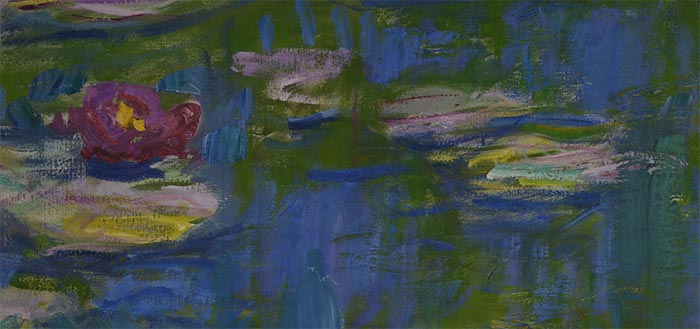
Monet’s series of paintings of the Rouen Cathedral demonstrate how you can use scumbling to paint the illusion of texture. In the painting below, notice the build-up of blues, purples and oranges. The broken color creates the illusion of a rough building, which is reiterated by the physical texture of the thick paint.
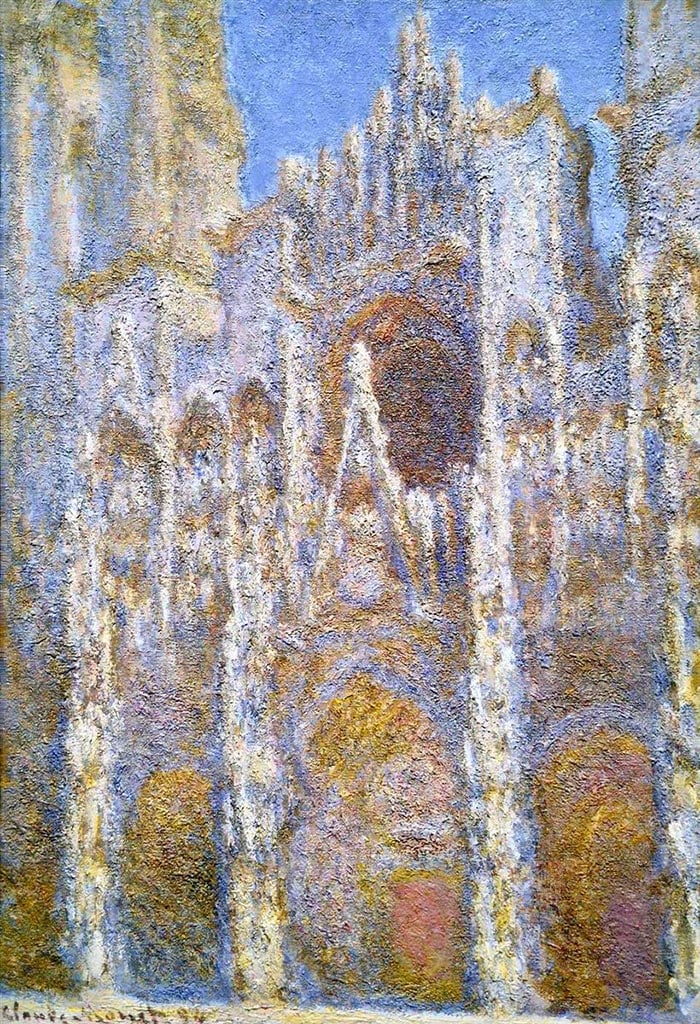
Turner used scumbling to paint his atmospheric and moody seascapes and landscapes. He would build up layer upon layer of scumbled yellows, reds and even blacks, allowing parts of the lighter layers below to remain exposed. The end result is a strong ambient effect, with the feeling of light bursting through from the background.

In my painting below, I made use of scumbling to paint the choppy water. I painted a rough colored ground of broken blues and purples, then once that layer dried, I scumbled light purples over the top. Notice how I followed the contours of the water.
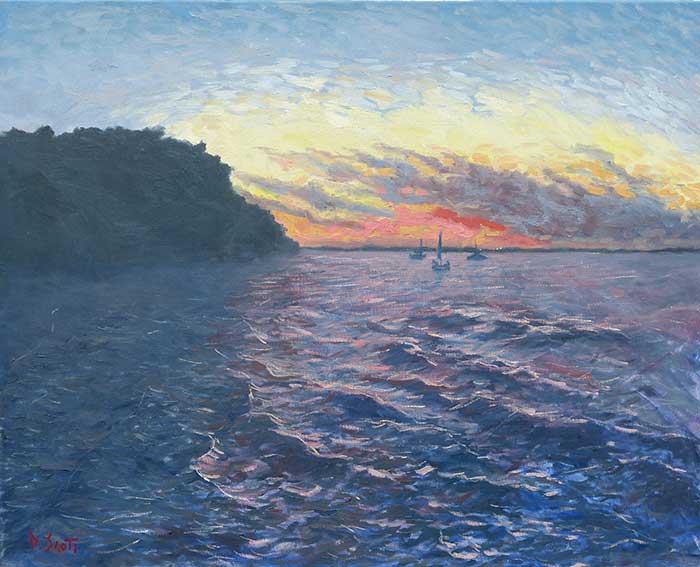
Want to Learn More?
You might be interested in my Painting Academy course. I’ll walk you through the time-tested fundamentals of painting. It’s perfect for absolute beginner to intermediate painters.
Thanks for Reading!
I appreciate you taking the time to read this post and I hope you found it helpful. Feel free to share it with friends.
Happy painting!
Dan Scott

Draw Paint Academy

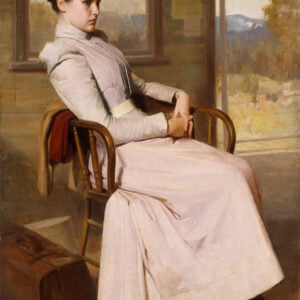
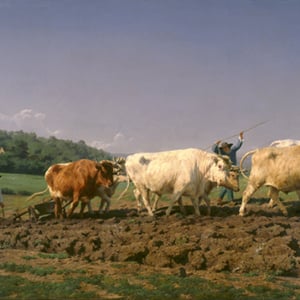
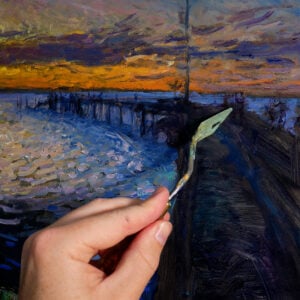
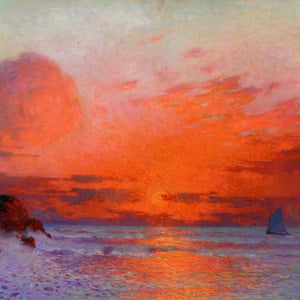
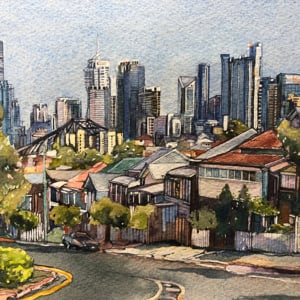
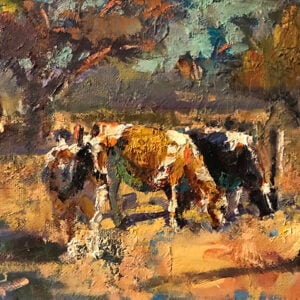
Thank you. You make IT easy to understand.
Glad to hear! Thanks, Dan
You give such amazing information.
Thank you. I understand continuity from scumbling
No problem! Thanks, Dan
I am an artist who uses oil/alkyds and only palette knife. I had no idea one of my “techniques “ was scrumbling. It works great. Love your drawpaintacademy.com. Thamks
Thanks Nanci! Dan
Thanks DAN For great help me to know painting and encouragement.
Happy to have helped. Thanks, Dan
Learned something entirely new!
That is great Deborah. Dan
Love the gentle waves.Please correct me,did you use a base colour (for the sea)and started building up the waves?
Hi Nif. Yes I used a based color then scumbled color on top.
Thanks! Dan
Hello Mr. Dan,
You’re AWESOME! I’m super impressed with both of your talent and ability to communicate so clearly and effectively. Your art tips are ”exactly what the doctor orders”. After reading your instructions (prescriptions), I’m feeling much better now, on the road to recovery. LOL
Thank you a whole big bunch for sharing!!!
I agree, Dan is an excellent teacher using words to explain what most use video for.
Hi Dan,
I always look forward to your insightful advice and instruction sent to me via email! I am an acrylic painter and gained useful knowledge from the “Sc rumbling” techniques and the examples of how you and other artists used this technique.
Thanks so much,
Jean
Thanks Dan, I enjoy all your instructions and how you frequently relate it to the Masters. You have the ability to make sense of some difficult concepts for me. Your’e a great teacher.
I look forward to all your emails.
Mary White
Always learning something new …Thx very much
Your explanations and examples may have solved many problems I have been having with depth and perception. Thank you. I’m really excited to practice your creative ideas.
I’m at the start of my self-taught journey into painting & have been devouring your articles since discovering your site. You explain concepts in a way that I understand and feel enriched from, which is very refreshing. I’m really excited to use your lessons as I develop my skill set and perspective. Thanks so much for sharing!
Extremely interesting. Thank you
Thank you so much Dan for your clear instructions and examples
I. Am a Kiwi women and it’s amazing that technology can bring us together to share ideas and tips about our passion for art
I have been using that technique just to try capture the image I am working on. Now I have a name for it and some useful examples from some of the masters of how they achieved some stunning effects. I am going to employ it in my backgrounds, to break them up. Thanks mate.
Very well explained! Absolutely love your painting!
This is so helpful. Thank you. But I still worry about scumbling dark paint over light(er). Could you say a bit more?
Hi Rita
Best tip – just try it out and see how you go. With scumbling, go easy with it at first. Don’t use much paint on your brush. Then build up from there.
Cheers!
Dan
Thanks a lot Dan.
You are a excellent guide.
Others above have expressed my feelings so well. Dan imparts invaluable information in easy to chew bite size pieces. He imparts in depth assessment and practicality with equal ease. And, Dan your verbal communication and teaching skills are supreme. I am loving all of your PaintDraw Academy courses.
As soon as my finances improve I will gladly pay for classes.
I really enjoyed the clear explanation of the technical method, very helpful.
Thanks so much for sharing your expertise!
Thank you for this article about scumbling
I had admired Monet’s painting but only after reading your article I understood his technique. I am sure this will go a long way in improving my painting.
Thank you.
Dan,
Thank you for your wonderful advice and skills. I understand so much more about painting, color, and technique.
Thank you, thank you!!
Teresa Finke
Thanks Dan , I’m a new painter and am learning so incredibly much from your Academy course . So much to know, but your clear explanations are making it easier, interesting and exciting. I’m loving it!
Kiwi Liz